Sports
What does House settlement mean for college sports? We break it down.
After nearly five years of litigation, a federal judge on the night of Friday, June 6 granted final approval to a settlement of three athlete-compensation antitrust cases against the NCAA and the Power Five conferences that is now set to fundamentally change college sports. Unless altered on appeal, the arrangement will allow — though not […]


 After nearly five years of litigation, a federal judge on the night of Friday, June 6 granted final approval to a settlement of three athlete-compensation antitrust cases against the NCAA and the Power Five conferences that is now set to fundamentally change college sports.
After nearly five years of litigation, a federal judge on the night of Friday, June 6 granted final approval to a settlement of three athlete-compensation antitrust cases against the NCAA and the Power Five conferences that is now set to fundamentally change college sports.
Unless altered on appeal, the arrangement will allow — though not require — schools to directly pay their athletes for the use of their name, image and likeness (don’t call it pay for play), subject to an annual cap based on a percentage of a defined set of Power Five athletics department revenues. These payments could begin July 1.
Current and former athletes, over a 10-year period, will receive shares of $2.8 billion in damages (as will the lawyers who represented them).
For schools that opt in to paying their athletes, the NCAA’s current system of sport-by-sport athletic scholarship limits will be scrapped in favor of sport-by-sport roster limits. However, after U.S. District Judge Claudia Wilken initially refused to approve the settlement because implementation of the limits starting with the 2025-26 school year would have resulted in thousands of athletes losing their spots on Division I teams, the deal was revised in a fashion that effectively could delay full implementation of the limits for several years. The elimination of the scholarship limit will result in new athletic scholarships being awarded.
In addition, while athletes will continue to be allowed to make name, image and likeness deals with entities other than their schools, there will be an effort by the power conferences (not the NCAA) to bring greater scrutiny to those arrangements, under the direction of a new entity called the College Sports Commission. Regardless of whether their school opts in to making NIL payments, any Division I athlete who has a deal, or deals, worth $600 or more will have to report those deals to (get ready for the new college-sports jargon) to system called “NIL Go.” That data will then by be evaluated to determine whether the deal has a “valid business purpose” and is within “a reasonable range of compensation,” whatever those terms are deemed to mean.
Again, the Commission will not be operated by the NCAA, but rather by the conferences, and the Commission will be charged with investigating alleged malfeasance, enforcing rules and penalizing rule-breakers.That means there’s a lot left to be sorted out, and that’s without considering myriad other tangential, or unrelated, to the settlement.This marks “the formal beginning of the greatest transformation in college sports history, period,” Gabe Feldman, director of the Tulane Sports Law Program and Tulane University’s associate provost for NCAA compliance, told USA TODAY Sports before the settlement was announced. “But I think the key, even after approval of the settlement, is that the changes in college sports are just starting. The settlement will likely trigger a series of additional changes, legal challenges and efforts to get Congressional intervention. This is not the end of a chapter — or, if it’s the end of a chapter, a new chapter will be beginning soon after. …”I think there are as many unanswered questions — and probably more unanswered questions — than answered questions that will come from the settlement.”
However, in a written declaration filed with the court on March 3 in support of final approval, plaintiffs’ economics expert Dan Rascher projected that the cap would be $23.1 million.According to the settlement documents, the Power Five schools’ financial data that forms the basis for the cap generally must be provided to the plaintiffs’ lawyers by May 15 of each year. The plaintiffs have the right to “reasonably audit such data.”The cap is set to increase annually by 4%, except in Years 4, 7 and 10, when new baselines would be established based on the defined set of Power Five athletics department revenues. However, under certain circumstances connected to the timing and value of media rights contracts, the plaintiffs’ lawyers have two options during the 10-year settlement period to have new baselines set more quickly.One hook to all of this is that the amount of money that schools can pay to their athletes for use of the NIL will be reduced by the value of new, or incremental, athletic scholarships they award above the number of scholarships currently allowed in a given sport, up to a maximum of $2.5 million. In an example from the settlement documents, a school currently offering 9 baseball scholarships, versus the 11.7 permitted by NCAA rules, that decides to offer 15 baseball scholarships will have added an incremental total of 3.3.So, if the initial cap is $20.5 million and a school awards $2.8 million in new scholarships, it could only make $18 million in NIL payments to athletes. This math has no impact on the NIL deals that athletes make with non-school entities, as long as those deals are approved under the Commission process.
What are the scholarship and roster limits?
There are several aspects to this. According to the principals, one of the justifications for roster limits was the lifting of the scholarship limits. But while some schools have said they will be adding scholarships — Texas and Ohio State, for example — this is not a requirement for schools. Southeastern Conference schools, at least for now, have agreed to not add to the current 85 football scholarships, a conference spokesman said at the conference’s recent spring meetings.
On the flip side, there could be current walk-ons who lose spots. The NCAA and the settlement say that athletes who are on scholarship and lose their roster spots must have their scholarships honored.
Under the settlement, schools would have the option to exempt from the limits any athlete who was on a roster in 2024-25 and who has been or would have been removed for 2025-26 because of the limits for the remainder of their college careers. It also would let schools similarly accommodate any high school senior who was “recruited to be, or was assured they would be” on a Division I school’s roster for the 2025-26 school year. These athletes are to be identified by the schools as “Designated Student-Athletes.”
However, this did not remove the roster limits from the settlement. And this did not require schools to keep all of their current athletes on their rosters — or to exceed the roster limits at any point. It just gave them the option to do so if they carried a “Designated Student-Athlete.”
The impact of roster limits could be felt in many sports, although NCAA officials have said NCAA governing groups are still working through a variety of details, including preseason practice squad sizes and how a team might be able to replace an injured player. In football, for instance, the roster limit will be 105. Walk-ons have been a huge part of the football culture at a number of schools. According to their respective fiscal-year 2024 financial reports to the NCAA, Nebraska had 180 football players, Texas A&M 143.
Meanwhile, as USA TODAY reported in May 2022 in one of a series of stories marking the 50th anniversary-of-Title-IX series, there are schools that have been using large roster counts in some women’s sport to address athletic-opportunity requirements connected to Title IX, the federal gender equity law. Wisconsin had 151 women’s rowers, according to its FY24 NCAA financial report. The women’s rowing roster limit under the settlement is 68.
How will Title IX impact payments to men’s and women’s sports?
Georgia and Texas Tech among other schools, have said they plan to allocate large percentages of the money they pay to athletes to football players and men’s basketball players. Because this money will be coming from the schools, rather than third parties, this seems all but certain at some point to result in a Title IX lawsuit. As objectors have noted in their legal arguments, Title IX states, in part that no person “shall, on the basis of sex, be excluded from participation in, be denied the benefits of, or be subjected to discrimination under any education program or activity receiving Federal financial assistance.”
An array of objectors to the settlement, and their attorneys, vehemently raised Title IX issues about how the damages money is overwhelmingly set to go to football and men’s basketball players. Among their arguments was that such an arrangement would lead schools to have an extremely disproportionate payment structure going forward. The counter to this argument is that, in general, football and men’s basketball players have greater market value than women’s athletes, and that head coaches in football and men’s basketball, generally, are paid much more than coaches of women’s teams.
The counter to this counter, as one set of objectors argued, is that by historically “failing to invest in women’s sports, the NCAA depressed the value of women’s NILs relative to their male counterparts. The parties know this.”
While overruling Title IX-related objections to the settlement, Wilken wrote: “To the extent that schools violate Title IX when providing benefits and compensation to student-athletes … (athletes) will have the right to file lawsuits arising out of those violations.”
The Biden Administration in January issued guidance saying NIL payments from schools were subject to Title IX scrutiny. The Trump Administration has rescinded that guidance.
What new procedures for college sports are being implemented?
While NCAA governance groups have set up changes to the association’s rules to accommodate the settlement, the NCAA’s central-office investigative and enforcement staffs are not going to be involved in the day-to-day oversight and operation of rules and procedures created by the settlement.
That work is being left to the power conferences and the new College Sports Commission, which will handle:




Attendant to all of this will be training school administrators in all of the new procedures and systems. In addition, Seeley faces the more intangible task of attempting to create buy-in and a culture of compliance among schools, administrators and coaches who are always looking for an edge on their competitors, and, in recent years, have become increasingly hostile toward investigations and enforcement from the NCAA, at least.
While there will be a cap on schools’ total pay to athletes, the athletes’ ability to have deals with other entities still leaves plenty of room for inequities, perceived or otherwise.
What will school NIL deals with athletes look like?
They will be anything except “employment” agreements. (The issue of athletes as school employees remains pending before a federal district court in Pennsylvania, where the NCAA and schools are arguing for dismissal, and for consideration from Congress, where Sen. Ted Cruz, R-Texas, continues to pursue a comprehensive college-sports bill.)
In general, they will grant the schools wide-ranging use of athletes’ NIL and place some significant limitations on the athletes. This is based on a court filing by an entity that was seeking to submit a friend-of-the-court (or, a amicus) brief — a commentary on the case by an interested third party.
The filing, in late March, came from lawyers for Athletes.org, Inc., an organization that described itself in the filing as an entity that “exists to educate, organize and represent college athletes as their chosen players association to ensure that their interests are protected as college athletics continues to evolve.”
Supporting exhibits that included documents described as templates of NIL agreements written by the Big Ten and Southeastern conferences and from the universities of Arizona, Kansas and Minnesota.
In response to an open-records request from USA TODAY Sports after the filing, Minnesota provided the current version of its template “Memorandum of Understanding.” Among its provisions, in an “Annex” to the MOU, it says the athlete “grants the Institution the right to use and sublicense Athlete’s NIL to promote the Institution, the Conference, and/or the NCAA and/or such entities’ respective third party partners, sponsors, affiliates and sublicensees in any way …’’
In a provision that has taken on greater significance in the wake of Nico Iamaleava’s transfer from Tennessee to UCLA, the document attributed to Arizona includes as “optional” language the terms for a buyout that could be required of an athlete — or their subsequent school, on their behalf — if they transfers during the term of the agreement. Arizona did not respond to an inquiry in late March about this document.
How are schools paying for these deals?
All kinds of strategies are being pursued. Tennessee said it will be charging its football-ticket customers a “talent fee.” Virginia Tech is set to raise its student athletic fee for the 2025-26 school year by nearly $300. (It also hosted a concert in May by Metallica, whose song, “Enter Sandman,” long has been the Hokies’ pre-football-game entry soundtrack).
Minnesota is seeking a potential naming rights deal for its venerable basketball arena, currently known as Williams Arena. Virginia and other schools are re-visiting donation levels that will be required for season-ticket purchasing rights. Oklahoma’s athletics department has said it is laying off 5% of its full-time employees. Florida athletics director Scott Stricklin recently told longtime journalist Pat Dooley’s “Another Dooley Noted Podcast” that he asked all Gators coaches to cut their budgets by 5%.
Meanwhile, schools from power conferences also will be counting on conference revenue shares increasing even as the conferences and the NCAA pay the settlement damages over time and the SEC also repays the $350 million it borrowed and distributed to members in 2021 to help them through the COVID-19 pandemic.
What about college athletes who opt out of settlement?
There are several hundred athletes who have opted out of the settlement and some, at present, are pursuing separate damages claims, though not all under the same lawsuit.
This may not turn out to be a class action, but there are some recognizable names making cases that they individually are owed money. Among them:
Men’s basketball players: Kris Jenkins, Frank Mason III, Franz Wagner, Moritz Wagner, Hunter Dickinson, Duncan Robinson, Jamal Shead, Jaime Jaquez.
Football players: Jake Browning, Cam Rising, Alex Hornibrook, Dax Milne, Drew Lock, Bryce Love, Cade McNamara, Donovan Peoples-Jones, Jake Fromm, Nakobe Dean, Will Levis, Trace McSorley.
Women’s basketball players: Kathleen Doyle, Kathryn Westbeld, Sophie Cunningham.
Baseball players: Griffin Conine, Jordan Beck, Matt McLain, Shea Langeliers.
Sports
Why Barbara Kendall backs women’s Olympic water polo campaign
In 2015, Barbara Kendall received the Sport NZ Leadership Award at the Halberg Awards. Photo: Photosport Ltd 2015 www.photosport.co.nz Five-time Olympian Barbara Kendall has thrown her weight behind the New Zealand women’s water polo team in their bid to qualify for the next Games. The ‘White Caps’ believe they have a golden opportunity to qualify […]
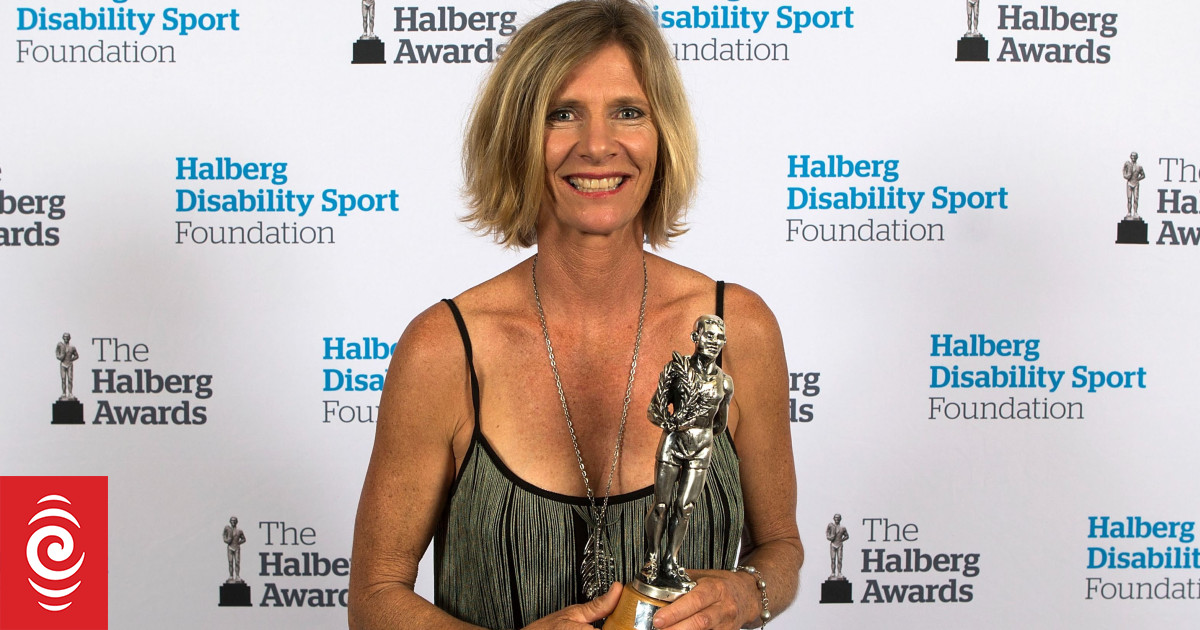

In 2015, Barbara Kendall received the Sport NZ Leadership Award at the Halberg Awards.
Photo: Photosport Ltd 2015 www.photosport.co.nz
Five-time Olympian Barbara Kendall has thrown her weight behind the New Zealand women’s water polo team in their bid to qualify for the next Games.
The ‘White Caps’ believe they have a golden opportunity to qualify for Los Angeles 2028, with the Olympic quota for women’s water polo increasing from 10 teams to 12.
The team narrowly missed out on Paris 2024, falling just two goals short of Olympic qualification.
Women’s water polo was only added to the Olympics in 2000, with men’s water polo on the programme since 1900. No New Zealand team have ever qualified for the Olympics in the sport.
Kendall competed at five Olympic Games, winning gold, silver and bronze medals in windsurfing. She is now the White Caps performance coach and was introduced to water polo through her two daughters.
“They started playing at school and just loved it,” she said. “There was no-one at the school really managing it, so I just stepped in and ended up managing water polo for Whangaparāoa College, right up until both of them finished.
“I didn’t really know much about it, but I knew how to put a team together.”
Eldest daughter Samantha later joined the Atlantis City club in Auckland, where Kendall met White Caps head coach Angie Winstanley-Smith.
“What she was trying to achieve was a big dream with very little resource to try and get a team to the Olympic Games in Paris,” Kendall said. “There was no money, so it was pretty much a voluntary role, just building a plan and it’s taken a long time.
“She was, like, ‘Barbara, we’d love to have you on the team just supporting’ and I went, ‘Yep’.”

NZ women’s water polo team – the White Caps.
Photo: Catharyn Hayne Photography
NZ Water Polo chief executive Jan Shearer competed at three Olympics in sailing, winning a silver medal with Leslie Egnot at Barcelona 1992.
Olympian Polly Powrie joined the White Caps a couple of years ago as team manager. Powrie is a two-time Olympic medallist, winning gold at London 2012 and silver at Rio 2016, alongside teammate Jo Aleh in the women’s 470 sailing class.
England-born Winstanley-Smith represented Great Britain for 11 years, including the 2012 London Olympics, before retiring in 2014 and moving to New Zealand.
“Angie is an outstanding individual,” Kendall said. “Most people wouldn’t dedicate their life to it, it’s a real life calling.
“Then, when Jan became CEO, it was, like, ‘Right, I’m in’, because Jan’s an amazing operator, and then Polly joining as well. When you have really good operators in behind a good coach, who knows what can happen, so that was why I joined.”
Kendall knows what it’s like to prepare for Olympic qualification, but that’s brand new territory for the White Caps squad members. Some have spent time playing in the American college system on scholarships, some are coming from club level.
“Taking them from that level to actually what’s required when you step up into high performance systems is quite a big jump and some people don’t make it, because it’s relentless, it’s 24/7.
“It’s meticulous and so many boxes need to be ticked to ensure that you are operating under a high performance energy stream. It’s tiring and it’s really hard.”
Kendall enjoys working within a team sport.
“What a privilege to work with a group of female athletes striving to be their very best,” she said. “The dynamics are quite different, because you can have one person off and it can affect the whole team.
“They learn to understand their teammates, and what stresses them or what motivates them. They have to be able to adapt and have empathy.
“All those things you learn from a team sport, which you probably don’t learn from an individual sport, because it’s all about you, but in a team sport, you’ve got to look outside yourself a lot more.”

The NZ women’s water polo team at a training base in Auckland.
Photo: Supplied
Kendall said she had a “million stories” she could share about the realities of high performance sport, “based on everything I learnt in 25 years of travelling overseas, sleeping in cars, little support”.
“When you get to the end of it, you may not qualify for the Olympic Games,” she said. “You may not win a medal, but what you have learnt that has made you you, that’s priceless …and that’s where I come in.”
Kendall’s philosophy is to grow the person, then the athlete will flourish.
“In high performance sport, you go into pressure cooker situations and all your fears surface, so it’s how you embrace them and learn through them. It can be a really tough journey, so understanding that is actually when the most growth occurs, and you are much stronger and resilient from those times.”
The White Caps are currently on the road, gaining valuable experience in Europe against the world’s top teams, before heading to the world aquatics championships in Singapore.
Kendall will rejoin the team there, after a quick detour to watch daughter Aimee Bright compete at the 2025 iQFOiL world championships in Denmark. Bright is one of New Zealand’s top young windfoilers, a newer evolution of windsurfing.
Stacked with Olympic experience

New Zealand sailors Jo Aleh and Polly Powrie (right) at the Olympics.
Photo: PHOTOSPORT
Winstanley-Smith, who started coaching the team in 2017, appreciates that she has now got a management team stacked with Olympic experience.
One of her assistant coaches is Eelco Uri, a former Dutch player, who competed at the 1996 and 2000 Olympics with the Netherlands men’s team.
Winstanley-Smith said of Kendall: “Anyone who meets Barbara, it’s impossible not to feel energised.
“She’s been to five Olympics, she works with the IOC. Ultimately, what she brings is, ‘Yes, this is high performance, but it’s fun, we choose to be here’,” she said.
“She challenges the environment, and gets us to look at each other as people and how we can connect, and how everyone is different and how we navigate that within a team, so she’s been gold in that respect for me.”
Shearer spent three years as CEO of Snow Sports NZ, before taking charge of NZ Water polo in 2021, when Covid was having a big impact. She is also board chair of Canoe Racing NZ.
Winstanley-Smith’s first three months of communication with Shearer was over Zoom, when Auckland was in lockdown.
“She came in, and just provided a support for me and a guidance in the New Zealand high performance environment, and her connections and ability to get stuff done is just incredible.
“Immediately, her knowledge and expertise, she came from Snow Sports and we’ve all seen the success they have had, and also Canoe Racing New Zealand, so two organisations she’s been involved with who’ve had a lot of Olympic success, I don’t think that’s by chance.”

Jan Shearer (left) and Leslie Egnot at the Barcelona Olympic Games, 1992.
Photo: PHOTOSPORT
Winstanley-Smith said Powrie was the most unassuming, laid-back person she had ever worked with.
“So level-headed, which is fantastic for me, because she balances my ADHD out, so it’s great,” she laughed.
“She just loves being involved in sport, but not for the limelight. The girls can sit down at breakfast in tournament and chat through, ‘What was the morning like before you went out to sail your last race and won gold’ – those key moments that Polly has lived that she can bring real-life experience.”
White Caps captain Jessica Milicich, 29, has been in the squad for nine years and said missing out on Paris was difficult, but it made them confident they could make it.
She said having so much Olympic experience around the team was invaluable.
“Having Angie lead our programme has been really important for us,” Milicich said. “We wouldn’t be in the position that we are today without her.
“She’s really driven the women’s programme forward in the time that she’s been head coach. I’ve never met anyone as technically capable as her.
“She understands what you’re going through in high-pressure moments, she is very calm in times of stress, she is just so valuable and we are lucky to have someone like her involved.”

Jessica Milicich of the NZ women’s water polo team.
Photo: Deep Blue Media
Milicich said also having Powrie and Kendall in their camp filled them with confidence.
“They both came to the Doha world champs with us last year and the impact that they had was so positive, so all of our feedback was that we wanted them to be involved moving forward.
“Barbara creates an atmosphere where she brings out the best in everyone. She is really focussed on how we can perform as a group and individually at our best, so I think that is really important, because when you get to those international moments, she has so much experience and value to offer.
“Then Polly is just awesome. Having the two of them, I think we are very fortunate, and I don’t think you’d look across any other staff or team management, and have the same kind of experience or value.”
Traditionally, Europe produces strong water polo teams like Hungary, Greece and Italy. USA is strong in women’s water polo and Australia won silver in Paris last year.
“For us to break in to that upper tier, we are a little bit further away, so the more we get exposed to those kind of teams, the better,” Milicich said.
Water polo is now one of 10 recognised team sports under the High Performance Sport New Zealand programme, which has bumped up their funding.
“Singapore is one of our first world championships where we haven’t had to do much fundraising,” Milicich said. “It’s covered, but normally, it has been self-funded.
“To get to this point where we can now move forward and hopefully continue to grow the sport is really exciting.”
Sign up for Ngā Pitopito Kōrero, a daily newsletter curated by our editors and delivered straight to your inbox every weekday.
Sports
USATF MOURNS PASSING OF OLYMPIAN AND COACHING LEGEND BILL DELLINGER
Bill Dellinger, a three-time Olympian who earned bronze in the 5000 meters at the 1964 Tokyo Games and went on to one of the most storied coaching careers in American track and field history, died June 27. He was 91. Born March 23, 1934, in Grants Pass, Oregon, Dellinger attended Springfield High School, where he […]
Bill Dellinger, a three-time Olympian who earned bronze in the 5000 meters at the 1964 Tokyo Games and went on to one of the most storied coaching careers in American track and field history, died June 27. He was 91.
Born March 23, 1934, in Grants Pass, Oregon, Dellinger attended Springfield High School, where he earned numerous accolades and won the Oregon state class A 880-yard and mile titles as a senior in 1952.
Taking his talents to the University of Oregon, where he eventually captured three Pacific Coast Conference golds, Dellinger won NCAA gold in the mile as a sophomore in 1954, and silver in 1955. In 1956 he moved up in distance and was the national champion in the 5000, setting the stage for his first Olympic Trials. At Los Angeles on June 29, he broke the American record in the 5000 with a 14:26.0 that gave him a three-second margin of victory.
Dellinger lowered his American record to 14:25.5 at Berkeley in October, and after losing the record to Max Truex the next weekend, he regained it in a big way with a 14:16.2 at Los Angeles in his final Olympic warmup meet. At the Melbourne Olympic Games Dellinger easily qualified for the 5000 final with a third place 14:26.8 in his heat, but he was not able to finish the final.
Finishing third in the AAU 5000 in 1957 and again in 1958, Dellinger embarked on a European tour in the summer of ’58 that yielded an American record of 3:41.5 in the 1500 in a dual meet with Hungary. He also placed second in the 5000 in matches against the Soviet Union and Greece.
The next summer saw Dellinger take the AAU 5000 crown before going on to win gold at the Pan American Games. He was the runner-up to Jim Beatty in the 1960 Olympic Trials 5000, garnering his second Olympic berth, and in Rome he missed out on the final with a fourth place effort in the heats.
Putting the pieces all together in 1964, Dellinger tied with Bob Schul for the 5000 win at the Olympic Trials and went to Tokyo with his eyes on the podium. Facing miserable running conditions with heavy rain falling, Schul and Dellinger faced off against pre-race favorite Michael Jazy of France. Jazy had a good lead going into the final bend, but Schul burst past him halfway down the home stretch to become the first American to win the 5000 at the Games. Dellinger and Harold Norpoth of West Germany also passed the quickly tiring Jazy and Dellinger edged the Frenchman for bronze in a lifetime best of 13:49.8.
Dellinger had started teaching at Thurston High School in 1960 after serving in the U.S. Air Force and was an unpaid coach for the school’s track team to avoid jeopardizing his amateur status. In April 1966 he accepted a position on the physical education staff at Lane Community College, and a year later he began what would be a legendary coaching stint at his alma mater.
Joining the Oregon coaching staff under Bill Bowerman on Sept. 1, 1967, Dellinger moved up to associate coach in 1970 and in 1972 was the Ducks’ interim head coach while Bowerman served as head coach for the U.S. team for the Munich Olympic Games. That title became permanent in March 1973 after Bowerman stepped down to lead a fundraising effort to renovate Hayward Field, and Dellinger would remain at the helm until his retirement in late 1998.
Oregon’s track and field and cross country success continued under Dellinger’s leadership as the Ducks won the 1984 NCAA outdoor championships and four NCAA cross country team titles to go with three Pac-10 team crowns. Among the athletes he helped guide were Steve Prefontaine, Rudy Chapa, Joaquin Cruz, Bill McChesney, Jr., and Alberto Salazar. Dellinger was named to the coaching staff for Team USA at the 1984 Olympic Games in Los Angeles.
Dellinger was inducted into the National Track & Field Hall of Fame in 2001, and in 2021 USATF honored him with the Legend Coach Award. He is a member of the USTFCCCA Hall of Fame as an athlete and as a coach and is also in the National Distance Running Hall of Fame. Dellinger is a member of the Oregon Sports Hall of Fame, the University of Oregon Athletics Hall of Fame, the Drake Relays Hall of Fame, and the Grants Pass Hall of Fame.
Services are pending.
Sports
Chargers’ Charles Woodhams named 2024-25 G-MAC Male Scholar Athlete of the Year
Story Links As a talented shooting guard and a two-year starter at Hillsdale College, Charles Woodhams was a force on the court for the Chargers men’s basketball team. As special as Woodhams was on the hardwood for Hillsdale, however, his achievements in the classroom might be even more impressive. Woodhams’ incredible balance […]
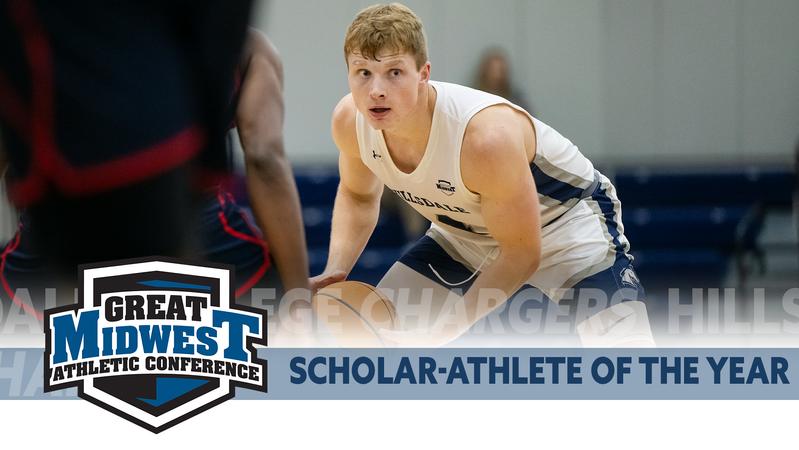
As a talented shooting guard and a two-year starter at Hillsdale College, Charles Woodhams was a force on the court for the Chargers men’s basketball team.
As special as Woodhams was on the hardwood for Hillsdale, however, his achievements in the classroom might be even more impressive.
Woodhams’ incredible balance of athletic and academic success has earned him a major honor from the Great Midwest Athletic Conference, which named him the league’s Male Scholar Athlete of the Year for the 2024-25 campaign.
The G-MAC Male Scholar Athlete of the Year award is presented to the men’s athlete who has compiled the most outstanding record in athletics, scholarship and leadership over the course of the school year across all sports the G-MAC offers. Athletic departments across the G-MAC nominate one individual for the award each year, and the winner is selected based on a vote among all institutions.
Woodhams is the fourth Hillsdale athlete to win the G-MAC Scholar Athlete Award since the Chargers joined the G-MAC in 2017, and the third male athlete from Hillsdale to win in the past five years. He joins softball player and swimmer Victoria Addis (2019-20), football player Joey Brenner (2020-21) and baseball player Lewis Beals (2022-23) as a Hillsdale athlete to win the award.
An excellent student throughout his time at Hillsdale, Woodhams graduated Summa Cum Laude from Hillsdale in May with a 3.93 GPA and a Bachelor’s of Science in Biology. He plans on becoming a doctor and is choosing among the medical schools who’ve accepted him to determine where he’s attending in the year to come.
During his time in college, Woodhams participated in the prestigious LAUREATES program to fund undergraduate research, conducting a study and presenting the results to a Beta Beta Beta National Biology conference in 2025. Along with membership in Beta Beta Beta, Woodhams also was a member of the Sigma Zeta National Science and Math honorary and was named the CRC Outstanding Chemistry Student of the Year during his time at Hillsdale.
Woodhams was named to the NABC Academic Honors Court three times in his collegiate career, was a four time Academic All-G-MAC honoree, a three-time D2ADA All-Academic Honoree and made the CSC Men’s Basketball Academic All-District team twice.
On the court, Woodhams was a key player offensively for the Chargers in the 2023-24 and 2024-25 seasons, scoring in double digits in both campaigns and leading Hillsdale in points per game in 2024-25. He earned first-team All-G-MAC honors as a senior, scoring in double figures in 27 of Hillsdale’s 30 games, with a season-high 26 points in a 83-78 road win over Ashland on Jan. 2 highlighting a stellar year.
As a player, Woodhams was known for his offensive efficiency, finishing sixth in the G-MAC in field goal percentage (.495) and fourth in 3-point percentage (.403), rare numbers for a 6-foot-3 guard who spent much of his time on the perimeter. He also made a huge impact defensively for the Chargers, serving as one of the top perimeter stoppers for a team that finished in the top two in the G-MAC in scoring defense in both of his seasons as a starter and led the G-MAC in 2024-25 at 65.4 points conceded per game.
He leaves Hillsdale with a winning legacy, going 105-38 over his collegiate career, including four 20-plus win seasons, and he was a part of the Chargers’ first-ever NCAA DII Midwest Regional championship and Elite Eight appearance in 2022.
Sports
Ole Miss Volleyball Officially Signs Coveted Transfer Aniya Lewis to 2025 Roster
OXFORD, Miss. – The Ole Miss volleyball program and head coach Bre Henry has added another dynamic hitter in the transfer portal, signing Aniya Lewis as a transfer. Lewis joins the Rebels following her first season of collegiate action at Kankakee Community College in Kankakee, Ill., and will have three seasons of eligibility remaining. Lewis […]
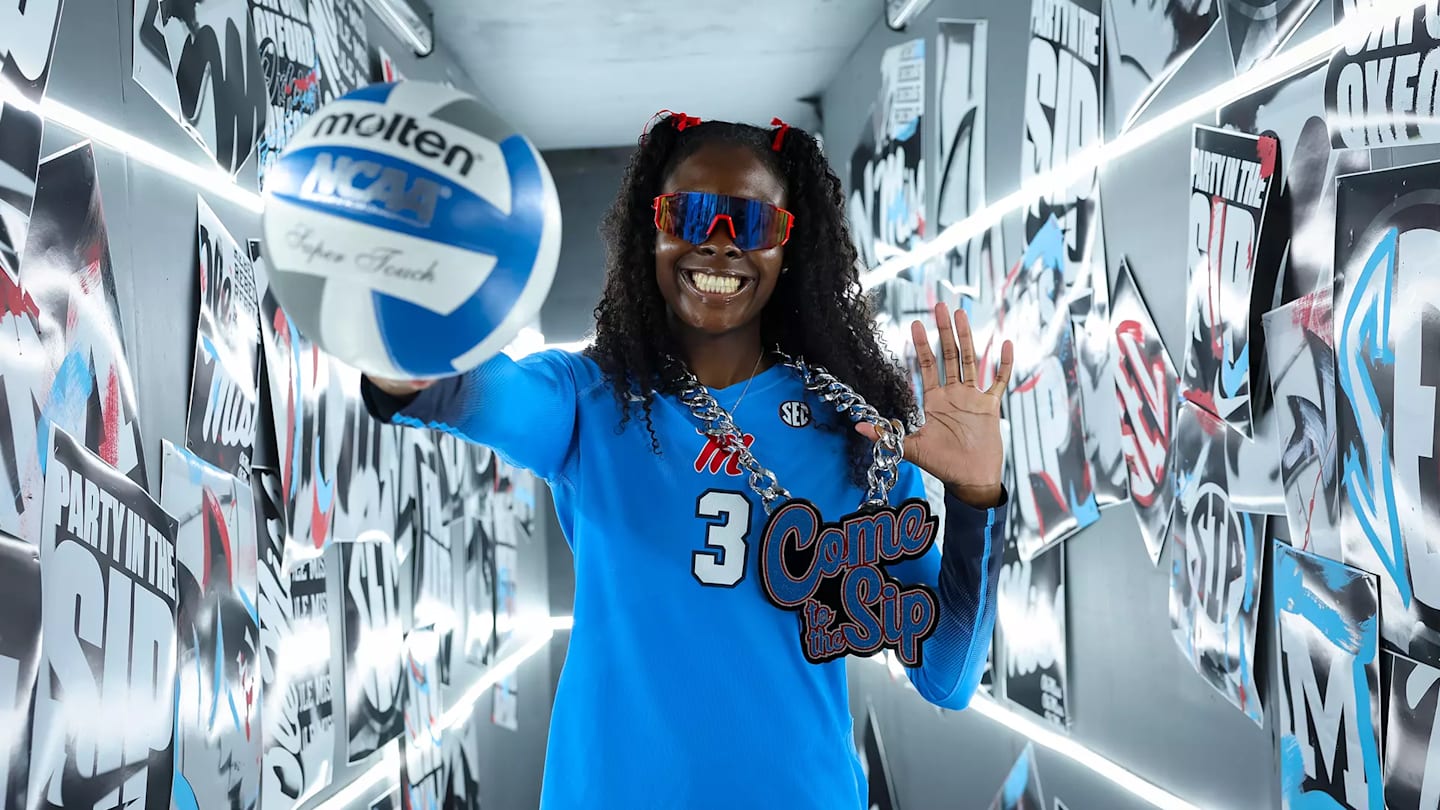
OXFORD, Miss. – The Ole Miss volleyball program and head coach Bre Henry has added another dynamic hitter in the transfer portal, signing Aniya Lewis as a transfer.
Lewis joins the Rebels following her first season of collegiate action at Kankakee Community College in Kankakee, Ill., and will have three seasons of eligibility remaining.
Lewis joins an impactful group of transfers for the 2025 season, alongside Gabi Placide (Northern Colorado), Jordyn Towns (Alabama) and Vivianna Samaniego (Cal State Bakersfield).
An outside hitter from Kankakee, Ill., Lewis quickly emerged as one of the top hitters in the NJCAA Division II ranks, ranking second in the NJCAA in kills per set with 5.12.
Lewis tallied 353 kills, hitting .295 with 45 total blocks, while tallying 397.5 points over 29 matches and 69 sets played.
Lewis is a gifted athlete, having a standout athletic career in high school as well, where she was an All-Conference and regional champion in volleyball and graduated summa cum laude.
Additionally, Lewis is a two-time state champion and All-American in track & field and an All-Conference Special Mention and regional champion in basketball.
The Rebels are set to open the 2025 regular season on Friday, Aug. 29 against Arkansas State in Atlanta, Ga., on the campus of Georgia Tech.
Prized Ole Miss Football Wide Receiver Commit ‘Locked in’ With the Rebels
Ole Miss Football Quarterback Target Seeing Stock Soar After Elite 11 Performance
Ole Miss Women’s Basketball Lands in Early Top-25, Named ‘Offseason Winners’
Follow Zack Nagy on Twitter: @znagy20 and Ole Miss Rebels On SI: @OleMissOnSI for all coverage surrounding the Ole Miss program.
Sports
Women’s Track: Henkel’s comeback story continues at North Central College
By Russ Hodges, Sports Editor Last winter, former Rochelle student-athlete Alivia Henkel found herself fighting to survive. What started as an ordinary morning at school turned into a life-altering experience for Henkel, who suffered a cardiac arrest and was promptly transported to the Loyola University Medical Center. There, Henkel was placed on an ECMO (extracorporeal […]

By Russ Hodges, Sports Editor
Last winter, former Rochelle student-athlete Alivia Henkel found herself fighting to survive.
What started as an ordinary morning at school turned into a life-altering experience for Henkel, who suffered a cardiac arrest and was promptly transported to the Loyola University Medical Center. There, Henkel was placed on an ECMO (extracorporeal membrane oxygenation) machine, which took over the functions of both her heart and her lungs. Henkel, an outstanding multi-sport athlete at RTHS, thought her opportunity to compete collegiately had vanished.
“I’ve always loved sports and I wanted to do sports for as long as I possibly could,” Henkel said. “That was a huge setback for me and it gave me an idea of how grateful I should be for the little things in life because in the hospital and when I was home, I wasn’t able to do the same daily activities I would normally do. I couldn’t stand up or get dressed on my own. I was in a lot of pain and experienced a lot of things I hadn’t experienced before… I asked my doctors if it would be possible for me to still be an athlete and if it would be possible to try sports in college.”
The cardiac incident was a significant blow for Henkel, who had battled through various injuries throughout her high school career including a concussion in basketball and a stress fracture during her junior season of track and field. The cardiac episode caused Henkel, an IHSA state track qualifier as a sophomore and a two-time All-Interstate 8 basketball player, to miss a large chunk of her senior basketball season and her entire senior season of track and field.
“I definitely think a lot of my strength has come from my faith,” Henkel said. “God has had my back over these last few years and I have the confidence that I’m doing the right things, whether it’s physical therapy everyday or getting 1 percent better everyday to do what I’m able to do.”
Despite facing an uncertain future, Henkel remained strong in her faith, slowly progressing with her recovery to where she received medical clearance to return to athletics last summer. Guided by her competitive spirit, Henkel still expressed a desire to play sports at the collegiate level. In April of last year, Henkel made the decision to continue her academics at North Central College, where she also aspired to be a member of the women’s track and field team in any capacity.
“Getting the clearance from my doctors was really encouraging,” Henkel said. “I always knew that I wanted to compete in college… After missing my track and field season during my senior year, I really wanted to see where I could go with track and I think I made the best decision I could. I love track so much and I’ve grown to love it so much over these past few years. The coach at North Central was very sweet to me and that connection was really helpful. Seeing the team culture and how competitive everyone was… North Central was the best choice for me.”
As Henkel’s journey continued at North Central this past year, her growth and progress didn’t come without more hurdles to overcome. In addition to suffering an injury during the indoor portion of her freshman season, Henkel admitted that she sustained another health scare this past fall, when she passed out while doing homework before an implantable cardioverter defibrillator, which was put inside her body after last winter’s incident, restored consciousness.
“My defibrillator kicked in and it shocked my heart, which woke me back up,” Henkel said. “I called the hospital and I went in for tests, but everything was working fine when I woke up… It was a little scary, but it was encouraging that my device works and I feel that it motivates me because, as an athlete, I do worry about whether or not something could happen. But I know now that if something does happen, I’m going to be OK because my device is protecting me.”
Despite enduring another cardiac event, Henkel continued on the path toward her return to compete. The former Lady Hub standout made her outdoor debut for the Cardinals at the NCC First Chance Distance Fling on March 28, when she dazzled with a time of 1:00.77 to take fourth out of 33 athletes in the 400-meter dash. It was the fastest 400 time of the season for Henkel, who helped North Central finish second in the 1600-meter relay with a time of 4:13.70.
“North Central has been a really good match for me,” Henkel said. “I’m really close with my teammates and I think that’s a great thing to have in college. I’m a very competitive person and I love the competition. I love the community and it’s been great seeing my teammates on campus and spending time with them at practice. It’s a really great community to be a part of.”
Less than 18 months after suffering her first cardiac incident, Henkel stood atop the podium at the CCIW Outdoor Championships in early May, when she ran a personal-best time of 1:03.13 to claim the conference title in the 400-meter hurdles. It was the highlight of a stellar outdoor season for Henkel, who also took first at the Elmhurst Twilight Invitational on April 25 after placing second in her first collegiate hurdle race at Augustana College’s Meet of Champions.
“That was truly incredible and I didn’t think I would be where I wound up at the conference meet,” Henkel said. “It’s my favorite race and I was so glad that I had the chance to compete in it, especially because I’ve had a few setbacks… I hadn’t run the race too many times, but there was a lot of energy and it was a home meet, so it was great to win and to have my team there.”
Henkel, who switched her academic focus from finance to biochemistry and intends to pursue a career in the medical field after graduating from college, will return for her sophomore season this upcoming school year. The RTHS alum has already set a series of goals, which include obtaining a qualifying time for the NCAA Division III National Championships. Henkel, who will be job shadowing at Rochelle Community Hospital this summer, said that her goals for next season also include competing in the indoor pentathlon and the outdoor heptathlon.
“My parents are in finance and it was really interesting to me at the time,” said Henkel, who plans to enroll in medical school after completing her bachelor’s degree at North Central. “After my experience, I thought medicine would be really cool and I love both biology and chemistry. I was scared to make that shift, but after I saw people working in medicine, I was inspired and when I had the chance to change my major during orientation, my hand shot in the air.”
Sports
DVIDS – News – Wounded Warriors Gain Inspiration From U.S. Paralympic Volleyball Team
Watching the 2012 Paralympic Games today left a group of Europe-based wounded warriors inspired, especially after they were able to meet some of the U.S. athletes. Soldiers assigned to Warrior Transition Units in Germany, Italy and Belgium, and participating in adaptive reconditioning programs, met the U.S. Women’s Sitting Volleyball Paralympic Team at the University of […]
Watching the 2012 Paralympic Games today left a group of Europe-based wounded warriors inspired, especially after they were able to meet some of the U.S. athletes.
Soldiers assigned to Warrior Transition Units in Germany, Italy and Belgium, and participating in adaptive reconditioning programs, met the U.S. Women’s Sitting Volleyball Paralympic Team at the University of East London during a trip sponsored by the U.S. Paralympic Committee, the Wounded Warrior Project and Red Cross.
Army Master Sgt. Major Luckett, a food supply noncommissioned officer and 25-year veteran, said he was thrilled during the meet and greet with the athletes.
“I was really excited to get a chance to see the team with their experience,” he said. “They explained their training and we had a chance to meet some of the players. I met [Kari] Miller, a former soldier. It was real exciting.”
Motivation and inspiration were often used by the wounded warriors to describe their feelings during and after meeting the paralympians.
“We get great motivation [from meeting them],” Luckett said. “Going through the type of stuff I’ve been through, and then seeing these individuals with these disabilities perform; it [lets] me know I [only] have a limit [right now]. But I know I can go out and make myself better going into the things I do to train for,” he said. “Things I’ve never done or I stopped doing since I had my injuries.”
Luckett was assigned to the WTU after being plagued by persistent knee and back problems and recently underwent a medical review board with results still pending.
“I had an opportunity to visit several events, and it built my confidence inside [for] what I can do with the injuries that I had,” the Petersburg, Va. native said.
“I had chills going through my body,” he added. “It was great, and I enjoyed it. It’s one of three things that I’ll experience in my life. It was a real big motivator for me. Go USA!”
Army Spc. Maurice Walter, an information systems operator-analyst, and native of Huntsville, Ala., also had the chance to meet the U.S. Paralympic volleyball team.
“I actually met quite a few,” he said. “I met Heather [Erickson] and Kari [Miller]. We have similar injuries so it’s motivating to actually see them out here and to talk to them.”
Walter said he reinjured his leg in Iraq during the course of day-to-day activities. He noted it aggravated a previous injury from an assignment in Korea resulting in his assignment to the WTU.
“I got some great insight from them,” Walter said. “They were telling us to push through no matter what it is, don’t hold back and just get it done. It’s really inspiring to see them,” he said. “Number one, they’re not letting their injuries hold them back from what they want to do.”
Walter said one of the volleyball players told him she grew up playing volleyball, and when she injured her leg she didn’t want to stop. “So she didn’t give up, so it inspires me to do anything that I want to do,” he said.
Although he enjoyed the trip, Walter noted the opportunity to meet the Paralympic volleyball team topped his list of activities during the trip.
“The visit to London was amazing,” he said. “But meeting the volleyball team was the best thing that came out of this trip. Of course, the sights and stuff are great, but meeting these individuals and seeing them – it’s really motivating and inspiring,” Walters said.
Story by Army Sgt. 1st Class Tyrone C. Marshall Jr., American Forces Press Service
| Date Taken: | 08.29.2012 |
| Date Posted: | 07.03.2025 12:54 |
| Story ID: | 509990 |
| Location: | WASHINGTON, US |
| Web Views: | 0 |
| Downloads: | 0 |
PUBLIC DOMAIN

This work, Wounded Warriors Gain Inspiration From U.S. Paralympic Volleyball Team, must comply with the restrictions shown on https://www.dvidshub.net/about/copyright.
-
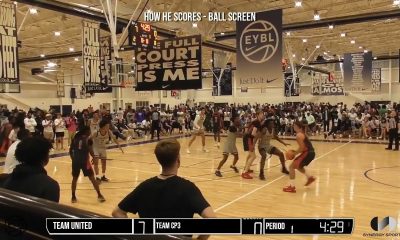
 College Sports3 weeks ago
College Sports3 weeks agoIU basketball recruiting
-

 Social Media3 weeks ago
Social Media3 weeks agoPune Athletes Make Global Mark at IRONMAN Hamburg and Brazil 2025
-
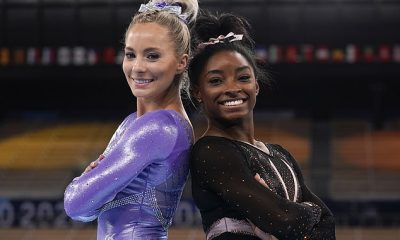
 Health3 weeks ago
Health3 weeks agoGymnast MyKayla Skinner Claims Simone Biles 'Belittled and Ostracized' Her amid Riley …
-

 Motorsports3 weeks ago
Motorsports3 weeks agoNASCAR Race Today: Mexico City start times, schedule and how to watch live on TV
-

 Motorsports3 weeks ago
Motorsports3 weeks agoNASCAR in Mexico City: Where to watch, start time, stream, lineup, race preview for inaugural Viva Mexico 250
-

 College Sports7 days ago
College Sports7 days agoWAC to Rebrand to UAC, Add Five New Members in 2026
-

 High School Sports3 weeks ago
High School Sports3 weeks agoNew Bedford top stories
-

 Health3 weeks ago
Health3 weeks agoChicago Sky receive unfortunate reaction to 'mental health' statement with Angel Reese
-

 College Sports3 weeks ago
College Sports3 weeks agoLivvy Dunne honors boyfriend Paul Skenes with twist on LSU jersey
-
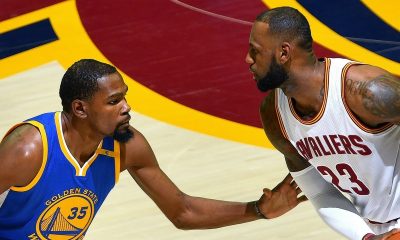
 Health3 weeks ago
Health3 weeks agoKyrie Irving's Strong Message Amid Men's Mental Health Awareness Month


































